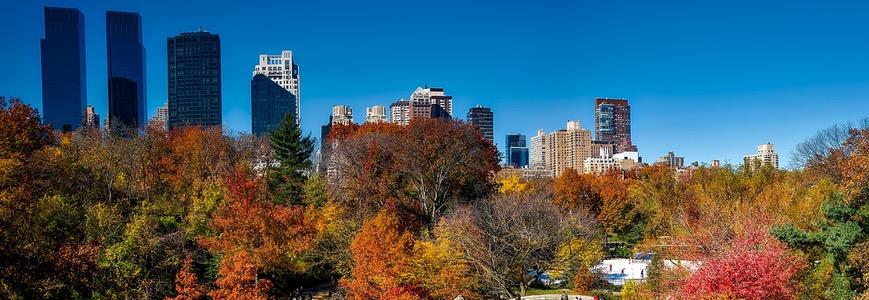THE LANDSCAPING SOLUTIONS BLOG
Welcome to our Blog. Inspiration, updates and industry trends from the team at Landscaping Solutions.
HUNDREDS OF PUBLIC PARKS SET TO CLOSE

A recent report by the Association of Play Industries has revealed how local authorities nationwide, have slowly been closing children’s playgrounds and parks at an alarming rate.
Extensive research carried out as part of the API report shows that between 2014 and 2016 local authorities across England closed 214 children’s playgrounds and public parks, depriving local communities of access to these vital green spaces in the process.
When questioned about the park closures a number of the local authorities involved admitted that there are in fact another 234 more parks and playgrounds scheduled for closure.
It is no secret that in recent years, there has been a series of spending cuts to play areas and public spaces around the UK but these latest figures highlight just how serious the situation really is.
Childhood obesity and wellbeing have been high on the Government’s agenda for sometime now yet the report revealed that the majority of the recent playground closures were as a direct result of a 37% cut in Government funding to local authorities.
The Chairman of the Association of Play Industries Mark Hardy had this to say “With increasing childhood obesity and the health benefits of activity and play well known, now is not the time for community playgrounds to be closing. This action goes against the Government’s clear intention to get children more active and needs to be stopped as quickly as possible”.
The loss of so many playgrounds across the country is undoubtedly a travesty and a number of organised protests have already taken place but with so many parks already closed is it too late to reverse the damage?
According to the same report approximately £100 million of investment could not only reverse the closures but also increase the number of playgrounds available to children across the country.
However, with the recent cuts as a clear indication, the funding is obviously not going to be coming from the government. Local authorities will have to continue to make difficult decisions about which parks and playgrounds are to be closed, unless they look towards organisations like the Big Lottery to meet the investment requirements.
As adults it is easy to become complacent about the importance of our connection with nature and quickly lose touch with it, we covered this topic in more detail in one of our recent articles "Losing Touch With Nature" a subject matter all of us at Landscaping Solutions are very passionate about.
It is heart breaking to think that unless something can be done we are gradually going to witness playgrounds and green spaces up and down the country disappearing from our urban landscape and while campaigners battle tirelessly to defend our parks and playgrounds, the harsh reality is that for now the future of Englands parks is unknown.
For further information or to read the The full report 'Nowhere to play' visit the API website.
URBAN FORESTS AND WHY WE NEED THEM

Trees transform the urban landscape,; they can improve the look of a road side, park or garden and allow us to connect with nature. In doing so they help reduce stress and improving our well being. Trees help keep the surrounding air clean and cool, reduce the risk of flood and provide a natural habitat for wildlife.
Breathing air within built up, polluted cities and towns exposes us to Particulate Matter (microscopic particles that can easily become trapped in the lungs). A recent study by The Nature Conservancy (TNC) reported that by 2050 Particulate Matter could claim an estimated 6.2 million lives. Trees can help mitigate these pollutants. A study of trees in 245 cities around the world showed that the average reduction of Particulate Matter surrounding a tree was between 7% to 24%. In addition, the study discovered that trees provided a cooling effect of up to 2C (3.6F).
A survey in 2014 calculated that London's trees provided some where in the region of £133 million of benefits every year in terms of air pollution removal.
It seems that trees play a vital role in ensuring our urban spaces are much cleaner than they would be without them. Unfortunately the same TNC report also highlighted the fact that the majority of cities featured in the study were removing more trees than they were planting, through continued urbanisation.
We covered a similar issue in an article back in June regarding the changing landscape of Britain’s front gardens and their decline, highlighting the alarming rate at which greenery is disappearing from our streets and neighbourhoods. The problem, it seems, is that the majority of cities the world over share the same approach with regards to trees and green spaces; namely they are regarded as serving an ornamental purpose only.
As shift in perception is called for; trees should be thought of as part of our public health infrastructure. Numerous studies have also shown that trees and green spaces in our towns and cities are essential for mental and physical health. Taken alongside the environmental benefits of trees, it becomes clear a well planned, targeted tree planting campaign is a smart investment for any city wishing to improve the all round health of it’s inhabitants.
POCKET PARKS

Local communities across the country have been given the go ahead for landscaping to commence on over 80 ‘pocket parks’.
As outlined in the DCLG (Department of Communities and Local Government) prospectus “pocket parks are small areas of inviting public space where people can enjoy relief from the hustle and bustle of city streets”.
Often landscaped from a single vacant plot or irregular pieces of land, pocket parks are not big enough for physical activities but instead provide communities with accessible green spaces, an opportunity to get closer to nature and socialise as well as a place to host community events.
£1.5 million has been allocated for the programme and grants ranging from £10,000 - £15,000 per project have now been awarded to the relevant local authorities for work to begin.
There are no strict guidelines regarding the landscape design of the pocket parks, innovative and traditional design proposals are welcomed equally. For the pocket parks to prove successful in the long run careful consideration must be taken at the design stage.
When it comes to designing a pocket park, there is no shortage of inspiration. The nationwide programme itself is in fact based on the recent pocket parks incentive that formed part of the Mayor’s London’s Great Outdoors programme. £2 million of funding was allocated to the design and landscaping of 100 pocket parks across 26 London boroughs. The programme itself proved to be a huge success and all 100 pocket parks are now complete and open to the public.
Without programmes of this nature, many of these urban spaces would no doubt have remained unloved and derelict for years to come.
The positive impact green spaces can have on a local community and its social well-being should not be underestimated. Small parks and green spaces enhance the existing landscape, improving the quality of life within the area and adding value to nearby homes.
With benefits like this in mind and the fact that parks are amongst the most frequently visited destinations in our towns and cities, large or small, it make sense to have more of them.
Further information regarding the pocket parks programme is available via GOV.UK website.